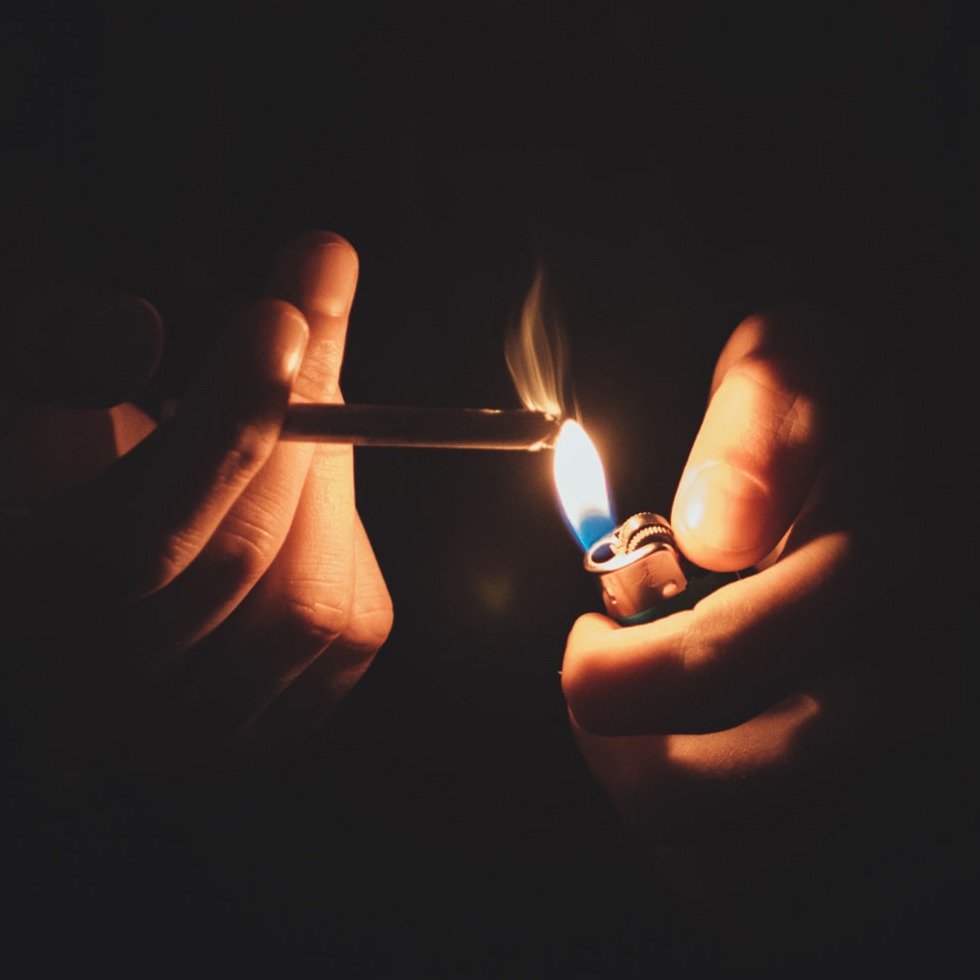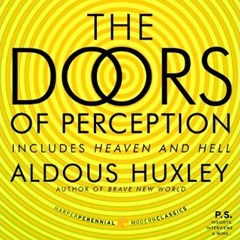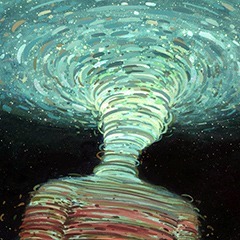Want your own copy? The paperback is available on Amazon.
But meanwhile my question remained unanswered. How was this cleansed perception to be reconciled with a proper concern with human relations, with the necessary chores and duties, to say nothing of charity and practical compassion? The age-old debate between the actives and the contemplatives was being renewed–renewed, so far as I was concerned, with an unprecedented poignancy. For until this morning I had known contemplation only in its humbler, its more ordinary forms–as discursive thinking; as a rapt absorption in poetry or painting or music; as a patient waiting upon those inspirations, without which even the prosiest writer cannot hope to accomplish anything; as occasional glimpses, in Nature, of Wordsworth’s “something far more deeply interfused”; as systematic silence leading, sometimes, to hints of an “obscure knowledge.” But now I knew contemplation at its height. At its height, but not yet in its fullness. For in its fullness the way of Mary includes the way of Martha and raises it, so to speak, to its own higher power. Mescalin opens up the way of Mary, but shuts the door on that of Martha. It gives access to contemplation–but to a contemplation that is incompatible with action and even with the will to action, the very thought of action. In the intervals between his revelations the mescalin taker is apt to feel that, though in one way everything is supremely as it should be, in another there is something wrong. His problem is essentially the same as that which confronts the quietist, the arhat and, on another level, the landscape painter and the painter of human still lives. Mescalin can never solve that problem; it can only pose it, apocalyptically, for those to whom it had never before presented itself. The full and final solution can be found only by those who are prepared to implement the right kind of Weltanschauung by means of the right kind of behavior and the right kind of constant and unstrained alertness. Over against the quietist stands the active-contemplative, the saint, the man who, in Eckhart’s phrase, is ready to come down from the seventh heaven in order to bring a cup of water to his sick brother. Over against the arhat, retreating from appearances into an entirely transcendental Nirvana, stands the Bodhisattva, for whom Suchness and the world of contingencies are one, and for whose boundless compassion every one of those contingencies is an occasion not only for transfiguring insight, but also for the most practical charity. And in the universe of art, over against Vermeer and the other Painters of human still lives, over against the masters of Chinese and Japanese landscape painting, over against Constable and Turner, against Sisley and Seurat and Cezanne, stands the all-inclusive art of Rembrandt. These are enormous names, inaccessible eminences. For myself, on this memorable May morning, I could only be grateful for an experience which had shown me, more clearly than I had ever seen it before, the true nature of the challenge and the completely liberating response.
Let me add, before we leave this subject, that there is no form of contemplation, even the most quietistic, which is without its ethical values. Half at least of all morality is negative and consists in keeping out of mischief. The Lord’s Prayer is less than fifty words long, and six of those words are devoted to asking God not to lead us into temptation. The one-sided contemplative leaves undone many things that he ought to do; but to make up for it, he refrains from doing a host of things he ought not to do. The sum of evil, Pascal remarked, would be much diminished if men could only learn to sit quietly in their rooms. The contemplative whose perception has been cleansed does not have to stay in his room. He can go about his business, so completely satisfied to see and be a part of the divine Order of Things that he will never even be tempted to indulge in what Traherne called “the dirty Devices of the world.” When we feel ourselves to be sole heirs of the universe, when “the sea flows in our veins … and the stars are our jewels,” when all things are perceived as infinite and holy, what motive can we have for covetousness or self-assertion, for the pursuit of power or the drearier forms of pleasure? Contemplatives are not likely to become gamblers, or procurers, or drunkards; they do not as a rule preach intolerance, or make war; do not find it necessary to rob, swindle or grind the faces of the poor. And to these enormous negative virtues we may add another which, though hard to define, is both positive and important. The arhat and the quietist may not practice contemplation in its fullness; but if they practice it at all, they may bring back enlightening reports of another, a transcendent country of the mind; and if they practice it in the height, they will become conduits through which some beneficent influence can how out of that other country into a world of darkened selves, chronically dying for lack of it.
Meanwhile I had turned, at the investigator’s request, from the portrait of Cezanne to what was going on, inside my head, when I shut my eyes. This time, the inscape was curiously unrewarding. The field of vision was filled with brightly colored, constantly changing structures that seemed to be made of plastic or enameled tin.
“Cheap,” I commented. “Trivial. Like things in a five-and-ten.” And all this shoddiness existed in a closed, cramped universe. “It’s as though one were below decks in a ship,” I said. “A five-and-ten-cent ship.”
And as I looked, it became very clear that this five-and-ten-cent ship was in some way connected with human pretensions, with the portrait of Cezanne, with A.B. among the Dolomites overacting his favorite character in fiction. This suffocating interior of a dime-store ship was my own personal self; these gimcrack mobiles of tin and plastic were my personal contributions to the universe.
I felt the lesson to be salutary, but was sorry, none the less, that it had had to be administered at this moment and in this form. As a rule the mescalin taker discovers an inner world as manifestly a datum, as self-evidently “infinite and holy,” as that transfgured outer world which I had seen with my eyes open. From the first, my own case had been different. Mescalin had endowed me temporarily with the power to see things with my eyes shut; but it could not, or at least on this occasion did not, reveal an inscape remotely comparable to my flowers or chair or flannels “out there.” What it had allowed me to perceive inside was not the Dharma-Body, in images, but my own mind; not Suchness, but a set of symbols– in other words, a homemade substitute for Suchness.
Most visualizers are transformed by mescalin into visionaries. Some of them–and they are Perhaps more numerous than is generally supposed–require no transformation; they are visionaries all the time. The mental species to which Blake belonged is fairly widely distributed even in the urban-industrial societies of the present day. The poet-artist’s uniqueness does not consist in the fact that (to quote from his Descriptive Catalogue) he actually saw “those wonderful originals called in the Sacred Scriptures the Cherubim.” It does not consist in the fact that “these wonderful originals seen in my visions, were some of them one hundred feet in height … all containing mythological and recondite meaning.” It consists solely in his ability to render, in words or (somewhat less successfully) in line and color, some hint at least of a not excessively uncommon experience. The untalented visionary may perceive an inner reality no less tremendous, beautiful and significant than the world beheld by Blake; but he lacks altogether the ability to express, in literary or plastic symbols, what he has seen.
From the records of religion and the surviving menuments of poetry and the plastic arts it is very plain that, at most times and in most places, men have attached more importance to the inscape than to objective existents, have felt that what they saw with their eyes shut possessed a spiritually higher significance than what they saw with their eyes open. The reason? Familiarity breeds contempt, and how to survive is a problem ranging in urgency from the chronically tedious to the excruciating. The outer world is what we wake up to every morning of our lives, is the place where, willy-nilly, we must try to make our living. In the inner world there is neither work nor monotony. We visit it only in dreams and musings, and its strangeness is such that we never find the same world on two successive occasions. What wonder, then, if human beings in their search for the divine have generally preferred to look within! Generally, but not always. In their art no less than in their religion, the Taoists and the Zen Buddhists looked beyond visions to the Void, and through the Void at “the ten thousand things” of objective reality. Because of their doctrine of the Word made flesh, Christians should have been able, from the first, to adopt a similar attitude towards the universe around them. But because of the doctrine of the Fall, they found it very hard to do so. As recently as three hundred years ago an expression of thoroughgoing world denial and even world condemnation was both orthodox and comprehensible. “We should feel wonder at nothing at all in Nature except only the Incarnation of Christ.” In the seventeenth century, Lallemant’s phrase seemed to make sense. Today it has the ring of madness.
In China the rise of landscape painting to the rank of a major art form took place about a thousand, in Japan about six hundred and in Europe about three hundred, years ago. The equation of Dharma-Body with hedge was made by those Zen Masters, who wedded Taoist naturalism with Buddhist transcendentalism. It was, therefore, only in the Far East that landscape painters consciously regarded their art as religious. In the West religious painting was a matter of portraying sacred personages, of illustrating hallowed texts. Landscape painters regarded themselves as secularists. Today we recognize in Seurat one of the supreme masters of what may be called mystical landscape painting. And yet this man who was able, more effectively than any other, to render the One in the many, became quite indignant when somebody praised him for the “poetry” of his work. ‘I merely apply the System,’ he protested. In other words he was merely a pointilliste and, in his own eyes, nothing else. A similar anecdote is told of John Constable. One day towards the end of his life, Blake met Constable at Hampstead and was shown one of the younger artist’s sketches. In spite of his contempt for naturalistic art, the old visionary knew a good thing when be saw it-except of course, when it was by Rubens. ‘This is not drawing,” he cried, “this is inspiration!” “I had meant it to be drawing,” was Constable’s characteristic answer. Both men were right. It was drawing, precise and veracious, and at the same time it was inspiration –inspiration of an order at least as high as Blake’s. The pine trees on the Heath had actually been seen as identical with the Dharma-Body. The sketch was a rendering, necessarily imperfect but still profoundly impressive, of what a cleansed perception had revealed to the open eyes of a great painter. From a contemplation, in the tradition of Wordsworth and Whitman, of the Dharma- Body as hedge, and from visions, such as Blake’s, of the “wonderful originals” within the mind, contemporary poets have retreated into an investigation of the personal, as opposed to the more than personal, subconscious and to a rendering, in highly abstract terms, not of the given, objective fact, but of mere scientific and theological notions. And something similar has happened in the held of painting, where we have witnessed a general retreat from landscape, the predominant art form of the nineteenth century. This retreat from landscape has not been into that other, inner divine Datum, with which most of the traditional schools of the past were concerned, that Archetypal World, where men have always found the raw materials of myth and religion. No, it has been a retreat from the outward Datum into the personal subconscious, into a mental world more squalid and more tightly closed than even the world of conscious personality. These contraptions of tin and highly colored plastic –where had I seen them before? In every picture gallery that exhibits the latest in nonrepresentational art.
And now someone produced a phonograph and put a record on the turntable. I listened with pleasure, but experienced nothing comparable to my seen apocalypses of flowers or flannel. Would a naturally gifted musician hear the revelations which, for me, had been exclusively visual? It would be interesting to make the experiment. Meanwhile, though not transfigured, though retaining its normal quality and intensity, the music contributed not a little to my understanding of what had happened to me and of the wider problems which those happenings had raised.
Instrumental music, oddly enough, left me rather cold. Mozart’s C-Minor Piano Concerto was interrupted after the first movement, and a recording of some madrigals by Gesualdo took its place.
“These voices,” I said appreciatively, “these voices– they’re a kind of bridge back to the human world.”
And a bridge they remained even while singing the most startlingly chromatic of the mad prince’s compositions. Through the uneven phrases of the madrigals, the music pursued its course, never sticking to the same key for two bars together. In Gesualdo, that fantastic character out of a Webster melodrama, psychological disintegration had exaggerated, had pushed to the extreme limit, a tendency inherent in modal as opposed to fully tonal music. The resulting works sounded as though they might have been written by the later Schoenberg.
“And yet,” I felt myself constrained to say, as I listened to these strange products of a Counter-Refonnation psychosis working upon a late medieval art form, “and yet it does not matter that he’s all in bits. The whole is disorganized. But each individual fragment is in order, is a representative of a Higher Order. The Highest Order prevails even in the disintegration. The totality is present even in the broken pieces. More clearly present, perhaps, than in a completely coherent work. At least you aren’t lulled into a sense of false security by some merely human, merely fabricated order. You have to rely on your immediate perception of the ultimate order. So in a certain sense disintegration may have its advantages. But of course it’s dangerous, horribly dangerous. Suppose you couldn’t get back, out of the chaos .. .”
From Gesualdo’s madrigals we jumped, across a gulf of three centuries, to Alban Berg and the Lyric Suire.
“This” I announced in advance, “is going to be hell.”
But, as it turned out, I was wrong. Actually the music sounded rather funny. Dredged up from the personal subconscious, agony succeeded twelve-tone agony; but what struck me was only the essential incongruity between a psychological disintegration even completer than Gesualdo’s and the prodigious resources, in talent and technique, employed in its expression.
“Isn’t he sorry for himself!” I commented with a derisive lack of sympathy. And then, “Katzenmusik— learned Katzenmusik.” And finally, after a few more minutes of the anguish, “Who cares what his feelings are? Why can’t he pay attention to something else?”
As a criticism of what is undoubtedly a very remarkable work, it was unfair and inadequate-but not, I think, irrelevant. I cite it for what it is worth and because that is how, in a state of pure contemplation, I reacted to the Lyric Suite.
When it was over, the investigator suggested a walk in the garden. I was willing; and though my body seemed to have dissociated itself almost completely from my mind–or, to be more accurate, though my awareness of the transfigured outer world was no longer accompanied by an awareness of my physical organism–I found myself able to get up, open the French window and walk out with only a minimum of hesitation. It was odd, of course, to feel that “I” was not the same as these arms and legs “out there,” as this wholly objective trunk and neck and even head. It was odd; but one soon got used to it. And anyhow the body seemed perfectly well able to look after itself. In reality, of course, it always does look after itself. All that the conscious ego can do is to formulate wishes, which are then carried out by forces which it controls very little and understands not at all. When it does anything more–when it tries too hard, for example, when it worries, when it becomes apprehensive about the future–it lowers the effectiveness of those forces and may even cause the devitalized body to fall ill. In my present state, awareness was not referred to as ego; it was, so to speak, on its own. This meant that the physiological intelligence controlling the body was also on its own. For the moment that interfering neurotic who, in waking hours, tries to run the show, was blessedly out of the way.
From the French window I walked out under a kind of pergola covered in part by a climbing rose tree, in part by laths, one inch wide with half an inch of space be tween them. The sun was shining and the shadows of the laths made a zebra-like pattern on the ground and across the seat and back of a garden chair, which was standing at this end of the pergola. That chair–shall I ever forget it? Where the shadows fell on the canvas upholstery, stripes of a deep but glowing indigo alternated with stripes of an incandescence so intensely bright that it was hard to believe that they could be made of anything but blue fire. For what seemed an immensely long time I gazed without knowing, even without wishing to know, what it was that confronted me. At any other time I would have seen a chair barred with alternate light and shade. Today the percept had swallowed up the concept. I was so completely absorbed in looking, so thunderstruck by what I actually saw, that I could not be aware of anything else. Garden furniture, laths, sunlight, shadow–these were no more than names and notions, mere verbalizations, for utilitarian or scientific purposes, after the event. The event was this succession of azure furnace doors separated by gulfs of unfathomable gentian. It was inexpressibly wonderful, wonderful to the point, almost, of being terrifying. And suddenly I had an inkling of what it must feel like to be mad. Schizophrenia has its heavens as well as its hells and purgatories. I remember what an old friend, dead these many years, told me about his mad wife. One day in the early stages of the disease, when she still had her lucid intervals he had gone to talk to her about their children. She listened for a time, then cut him short. How could he bear to waste his time on a couple of absent children, when all that really mattered, here and now, was the unspeakable beauty of the patterns he made, in this brown tweed jacket, every time he moved his arms? Alas, this Paradise of cleansed perception, of pure onesided contemplation, was not to endure. The blissful intermissions became rarer, became briefer, until finally there were no more of them; there was only horror.
Most takers of mescalin experience only the heavenly part of schizophrenia. The drug brings hell and purgatory only to those who have had a recent case of jaundice, or who suffer from periodical depressions or a chronic anxiety. If, like the other drugs of remotely comparable power, mescalin were notoriously toxic, the taking of it would be enough, of itself, to cause anxiety. But the reasonably healthy person knows in advance that, so far as he is concerned, mescalin is completely innocuous, that its effects will pass off after eight or ten hours, leaving no hangover and consequently no craving for a renewal of the dose. Fortified by this knowledge, he embarks upon the experiment without fear–in other words, without any disposition to convert an unprecedentedly strange and other than human experience into something appalling, something actually diabolical.
Confronted by a chair which looked like the Last Judgment–or, to be more accurate, by a Last Judgment which, after a long time and with considerable difficulty, I recognized as a chair–I found myself all at once on the brink of panic. This, I suddenly felt, was going too far. Too far, even though the going was into intenser beauty, deeper significance. The fear, as I analyze it in retrospect, was of being overwhelmed, of disintegrating under a pressure of reality greater than a mind, accustomed to living most of the time in a cosy world of symbols, could possibly bear. The literature of religious experience abounds in references to the pains and terrors overwhelming those who have come, too suddenly, face to face with some manifestation of the Mysterium tremendum. In theological language, this fear is due to the incompatibility between man’s egotism and the divine purity, between man’s self-aggravated separateness and the infinity of God. Following Boehme and William Law, we may say that, by unregenerate souls, the divine Light at its full blaze can be apprehended only as a burning, purgatorial fire. An almost identical doctrine is to be found in The Tibetan Book of the Dead, where the departed soul is described as shrinking in agony from the Pure Light of the Void, and even from the lesser, tempered Lights, in order to rush headlong into the comforting darkness of selfhood as a reborn human being, or even as a beast, an unhappy ghost, a denizen of hell. Anything rather than the burning brightness of unmitigated Reality–anything!
The schizophrenic is a soul not merely unregenerate, but desperately sick into the bargain. His sickness consists in the inability to take refuge from inner and outer reality (as the sane person habitually does) in the homemade universe of common sense–the strictly human world of useful notions, shared symbols and socially acceptable conventions. The schizophrenic is like a man permanently under the influence of mescalin, and therefore unable to shut off the experience of a reality which he is not holy enough to live with, which he cannot explain away because it is the most stubborn of primary facts, and which, because it never permits him to look at the world with merely human eyes, scares him into interpreting its unremitting strangeness, its burning intensity of significance, as the manifestations of human or even cosmic malevolence, calling for the most desperate countermeasures, from murderous violence at one end of the scale to catatonia, or psychological suicide, at the other. And once embarked upon the downward, the infernal road, one would never be able to stop. That, now, was only too obvious.
“If you started in the wrong way,” I said in answer to the investigator’s questions, “everything that happened would be a proof of the conspiracy against you. It would all be self-validating, You couldn’t draw a breath without knowing it was part of the plot.”
“So you think you know where madness lies?”
My answer was a convinced and heartfelt, “Yes.”
“And you couldn’t control it?”
“No I couldn’t control it. If one began with fear and hate as the major premise, one would have to go on to the conclusion.”
“Would you be able,” my wife asked, “to fix your attention on what The Tibetan Book of The Dead calls the Clear Light?”
I was doubtful.
“Would it keep the evil away, if you could hold it? Or would you not be able to hold it?”
I considered the question for some time. “Perhaps,” I answered at last, “perhaps I could–but only if there were somebody there to tell me about the Clear Light. One couldn’t do it by oneself. That’s the point, I suppose, of the Tibetan ritual–someone sitting there all the time and telling you what’s what.”
After listening to the record of this part of the experiment, I took down my copy of Evans-Wentz’s edition of The Tibetan Book of the Dead, and opened at random. “O nobly born, let not thy mind be distracted.” That was the problem–to remain undistracted. Undistracted by the memory of past sins, by imagined pleasure, by the bitter aftertaste of old wrongs and humiliations, by all the fears and hates and cravings that ordinarily eclipse the Light. What those Buddhist monks did for the dying and the dead, might not the modern psychiatrist do for the insane? Let there be a voice to assure them, by day and even while they are asleep, that in spite of all the terror, all the bewilderment and confusion, the ultimate Reality remains unshakably itself and is of the same substance as the inner light of even the most cruelly tormented mind. By means of such devices as recorders, clock-controlled switches, public address systems and pillow speakers it should be very easy to keep the inmates of even an understaffed institution constantly reminded of this primordial fact. Perhaps a few of the lost souls might in this way be helped to win some measure of control over the universe–at once beautiful and appalling, but always other than human, always totally incomprehensible-in which they find themselves condemned to live.









